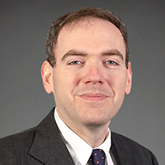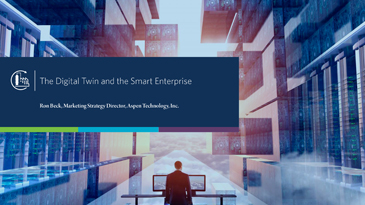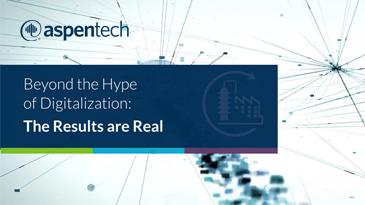It was another hot year in Florida for digital transformation at the ARC Forum. As operators reflected on what has been working and what remains to be done, there was a lot of talk about topics such as IT/OT convergence, the need for a step change in thinking and how to manage digital transformation as an organizational initiative, not just a technological one. Here are just a few of the key highlights and takeaways from the small set of sessions I was able to attend.
IT + OT = Goldmine
At Tuesday’s opening keynote, two Dow executives shared how they work closely together to better serve their customers and allow their organization to work faster. Chief Digital Officer Melanie Kalmar and SVP Operations, Manufacturing and Engineering Peter Holicki explained that in recent years, Dow has shifted its mindset from being a chemical company that does digital to being a digital organization that does material science.
They noted that Dow collects 20 billion data points every day from automation, yet little of that data is used outside of specific operations functions. That data could be an untapped goldmine.
Both Melanie and Peter emphasized that organizations are morphing—data analysts and security experts now sit in manufacturing, alongside the operators. To be more agile, leaders need to introduce new skills and deploy them in different places than they have in the past. Organizational lines are breaking down and teams will need to be more aggressive in collaborating. Peter joked that in a few years, no one will be able to tell him and Melanie apart.
Melanie reinforced that success will not happen without alignment at the top, like the trust she and Peter have developed. In addition, she said, “you have to keep communicating, keep alignment through the entire organization.”
The opportunity for IT and OT teams to work together to create value was echoed throughout the day. For example, in situations where you can’t get the expert close to the machine to review potential maintenance issues, you can get the data to the expert remotely to analyze and recommend action. Sten Tham, Reliability Operations Area and Exception Based Surveillance (EBS) Lead of Hess Corporation also noted that exception-based surveillance requires OT/IT and people working together in concert.
A Step Change in Optimization
Jim Beilstein, VP Advanced Manufacturing for OwensCorning, warned that organizations need to step up factory automation to prepare for the 40% of workers who are ready to retire. Apostolos Georgiou, Program Leader and Senior Advisor at ExxonMobil talked about how to push operations further from automated to autonomous. Where the former focuses on the need to program, measure, control and record, the latter includes the need to understand (modes, clusters, states), evaluate (benchmark), self-learn (best-achieved operation), self-optimize and self-organize (Big Data).
Another step change can come from the ability to test and scale. Jaclyn Arnold, Hexagon PPM’s VP, Owner Operator was part of a panel that discussed how using digital twins can tie together physical and digital worlds. We are beyond needing to prove the academic value of the digital twin as a strategic tool to optimize operating performance. Taking on a digital twin project will not have significant value unless you are ready to have a real and scalable real-life situation. Success also depends on having data clean and ready and finding a partner who can help lead the process.
A few industry leaders looked ahead and shared thoughts on 2030. Don Bartusiak, Chief Engineer, Process Control for ExxonMobil Research and Engineering, pointed out that giving equipment experts visibility into the whole enterprise, rather than looking at assets one by one, enables more strategic decisions. Billy Bardin, Dow’s Global Operations Technology Director, emphasized the need to move from plant-based optimization to value chain optimization.
Don joked that while it’s time for a step change in OT now, in 2030 there will still be plants working on replacing their control systems from the 1980s.
Overcoming Resistance
Billy Bardin suggested bringing your procurement team into new technology reviews early on. “The activation barrier to changing a strategic supplier is quite high,” he explained. Getting procurement involved allows them to understand the value of making a change; they can also help secure good pricing for proof of concept.
Billy also noted that we can often become enamored with the technology and tools, but that isn’t the best approach. He noted that it important to think about what you want to accomplish – whether it is productivity, sustainability, reliability or other goals—which is what should drive the introduction of any new technology.
When it comes to the users, Michael Carroll, VP Innovation at Georgia-Pacific, noted that change takes time. “We see people on the shop floor that are hungry for change. They are looking for a segue in their livelihood.… Organizations, however, need to give people time to adjust to change. That is often not part of the plan.”
Bruce Taylor, Director of Digital Transformation for Sinclair Oil, echoed the need to focus on people when implementing newer technologies such as APM. He noted that “physical APM” is tightly linked to “human asset performance” which means there is a need to address leadership, vision, transparency and culture for success.
Ricky Eckhart, IT/OT Enterprise Architect of ExxonMobil noted “Technology is great until it isn’t.” His point was that not every new technology is ready for prime time. It’s critical to make sure it is thoroughly production-tested before overcommitting. To gain acceptance and trust of workers it is important to focus first on quick wins with demonstrable business value. He then spoke to the need to create empathy with key resistors to understand their positions, noting that they bring expertise and perspectives which should be listened to. He also spoke to the need to have a community of suppliers and experts as external resources. AspenTech’s Mike Brooks echoed many of these sentiments in a panel discussion where he noted that “technology by itself will not move the needle.”
Finally, rethinking hiring and talent management will be crucial along the way. Georgia-Pacific VP Innovation Michael Carroll shared that his company has changed the way they hire: “We learned not to hire on what has to be - it wasn't working - and we weren't retaining. Hire instead for what can be.”
Attending conferences such as the ARC Forum really highlights the speed of change that capital-intensive industries are trying to achieve and the avalanche of possible technologies that operators need to consider. While all the potential of new technology is exciting, OT and IT leaders will have to balance the drive for speed and agility with the bottom line need for reliability and safety.
Get insight on building the Smart Enterprise in an evolving world in this Executive Brief.
IT + OT = Goldmine
At Tuesday’s opening keynote, two Dow executives shared how they work closely together to better serve their customers and allow their organization to work faster. Chief Digital Officer Melanie Kalmar and SVP Operations, Manufacturing and Engineering Peter Holicki explained that in recent years, Dow has shifted its mindset from being a chemical company that does digital to being a digital organization that does material science.
They noted that Dow collects 20 billion data points every day from automation, yet little of that data is used outside of specific operations functions. That data could be an untapped goldmine.
Both Melanie and Peter emphasized that organizations are morphing—data analysts and security experts now sit in manufacturing, alongside the operators. To be more agile, leaders need to introduce new skills and deploy them in different places than they have in the past. Organizational lines are breaking down and teams will need to be more aggressive in collaborating. Peter joked that in a few years, no one will be able to tell him and Melanie apart.
Melanie reinforced that success will not happen without alignment at the top, like the trust she and Peter have developed. In addition, she said, “you have to keep communicating, keep alignment through the entire organization.”
The opportunity for IT and OT teams to work together to create value was echoed throughout the day. For example, in situations where you can’t get the expert close to the machine to review potential maintenance issues, you can get the data to the expert remotely to analyze and recommend action. Sten Tham, Reliability Operations Area and Exception Based Surveillance (EBS) Lead of Hess Corporation also noted that exception-based surveillance requires OT/IT and people working together in concert.
A Step Change in Optimization
Jim Beilstein, VP Advanced Manufacturing for OwensCorning, warned that organizations need to step up factory automation to prepare for the 40% of workers who are ready to retire. Apostolos Georgiou, Program Leader and Senior Advisor at ExxonMobil talked about how to push operations further from automated to autonomous. Where the former focuses on the need to program, measure, control and record, the latter includes the need to understand (modes, clusters, states), evaluate (benchmark), self-learn (best-achieved operation), self-optimize and self-organize (Big Data).
Another step change can come from the ability to test and scale. Jaclyn Arnold, Hexagon PPM’s VP, Owner Operator was part of a panel that discussed how using digital twins can tie together physical and digital worlds. We are beyond needing to prove the academic value of the digital twin as a strategic tool to optimize operating performance. Taking on a digital twin project will not have significant value unless you are ready to have a real and scalable real-life situation. Success also depends on having data clean and ready and finding a partner who can help lead the process.
A few industry leaders looked ahead and shared thoughts on 2030. Don Bartusiak, Chief Engineer, Process Control for ExxonMobil Research and Engineering, pointed out that giving equipment experts visibility into the whole enterprise, rather than looking at assets one by one, enables more strategic decisions. Billy Bardin, Dow’s Global Operations Technology Director, emphasized the need to move from plant-based optimization to value chain optimization.
Don joked that while it’s time for a step change in OT now, in 2030 there will still be plants working on replacing their control systems from the 1980s.
Overcoming Resistance
Billy Bardin suggested bringing your procurement team into new technology reviews early on. “The activation barrier to changing a strategic supplier is quite high,” he explained. Getting procurement involved allows them to understand the value of making a change; they can also help secure good pricing for proof of concept.
Billy also noted that we can often become enamored with the technology and tools, but that isn’t the best approach. He noted that it important to think about what you want to accomplish – whether it is productivity, sustainability, reliability or other goals—which is what should drive the introduction of any new technology.
When it comes to the users, Michael Carroll, VP Innovation at Georgia-Pacific, noted that change takes time. “We see people on the shop floor that are hungry for change. They are looking for a segue in their livelihood.… Organizations, however, need to give people time to adjust to change. That is often not part of the plan.”
Bruce Taylor, Director of Digital Transformation for Sinclair Oil, echoed the need to focus on people when implementing newer technologies such as APM. He noted that “physical APM” is tightly linked to “human asset performance” which means there is a need to address leadership, vision, transparency and culture for success.
Ricky Eckhart, IT/OT Enterprise Architect of ExxonMobil noted “Technology is great until it isn’t.” His point was that not every new technology is ready for prime time. It’s critical to make sure it is thoroughly production-tested before overcommitting. To gain acceptance and trust of workers it is important to focus first on quick wins with demonstrable business value. He then spoke to the need to create empathy with key resistors to understand their positions, noting that they bring expertise and perspectives which should be listened to. He also spoke to the need to have a community of suppliers and experts as external resources. AspenTech’s Mike Brooks echoed many of these sentiments in a panel discussion where he noted that “technology by itself will not move the needle.”
Finally, rethinking hiring and talent management will be crucial along the way. Georgia-Pacific VP Innovation Michael Carroll shared that his company has changed the way they hire: “We learned not to hire on what has to be - it wasn't working - and we weren't retaining. Hire instead for what can be.”
Attending conferences such as the ARC Forum really highlights the speed of change that capital-intensive industries are trying to achieve and the avalanche of possible technologies that operators need to consider. While all the potential of new technology is exciting, OT and IT leaders will have to balance the drive for speed and agility with the bottom line need for reliability and safety.
Get insight on building the Smart Enterprise in an evolving world in this Executive Brief.






Leave A Comment